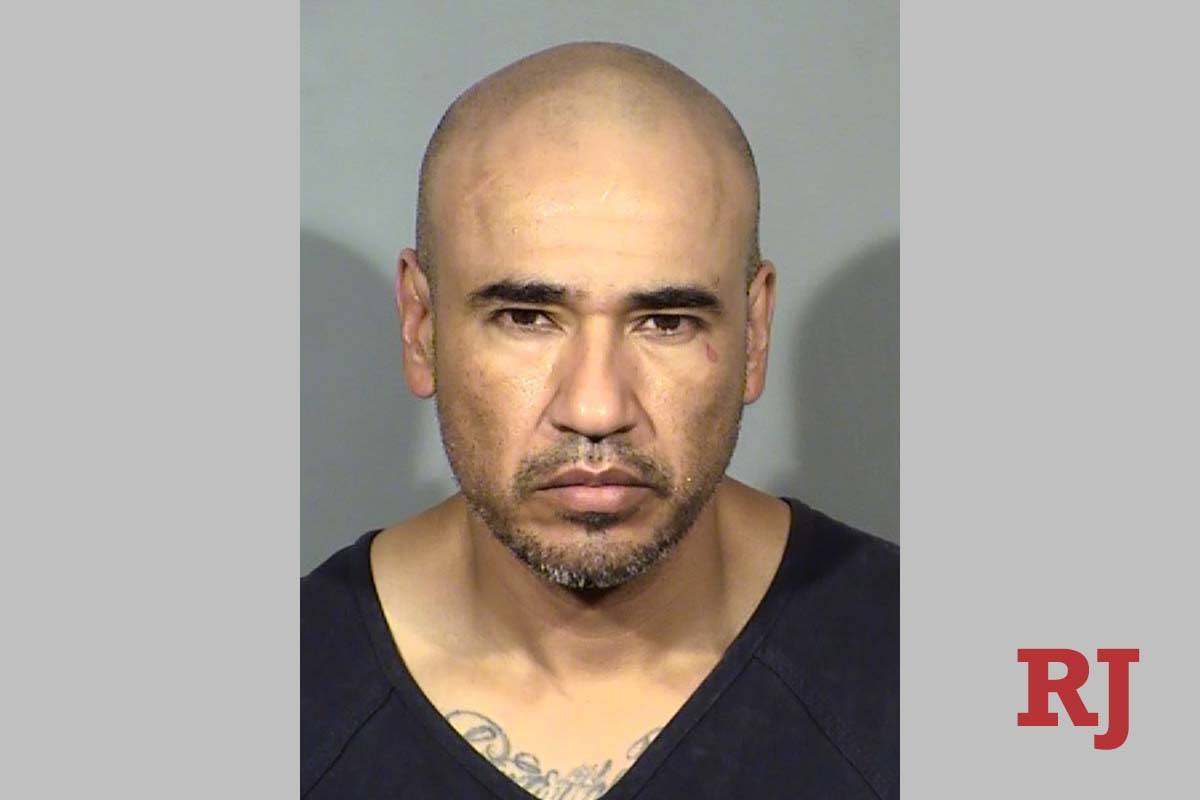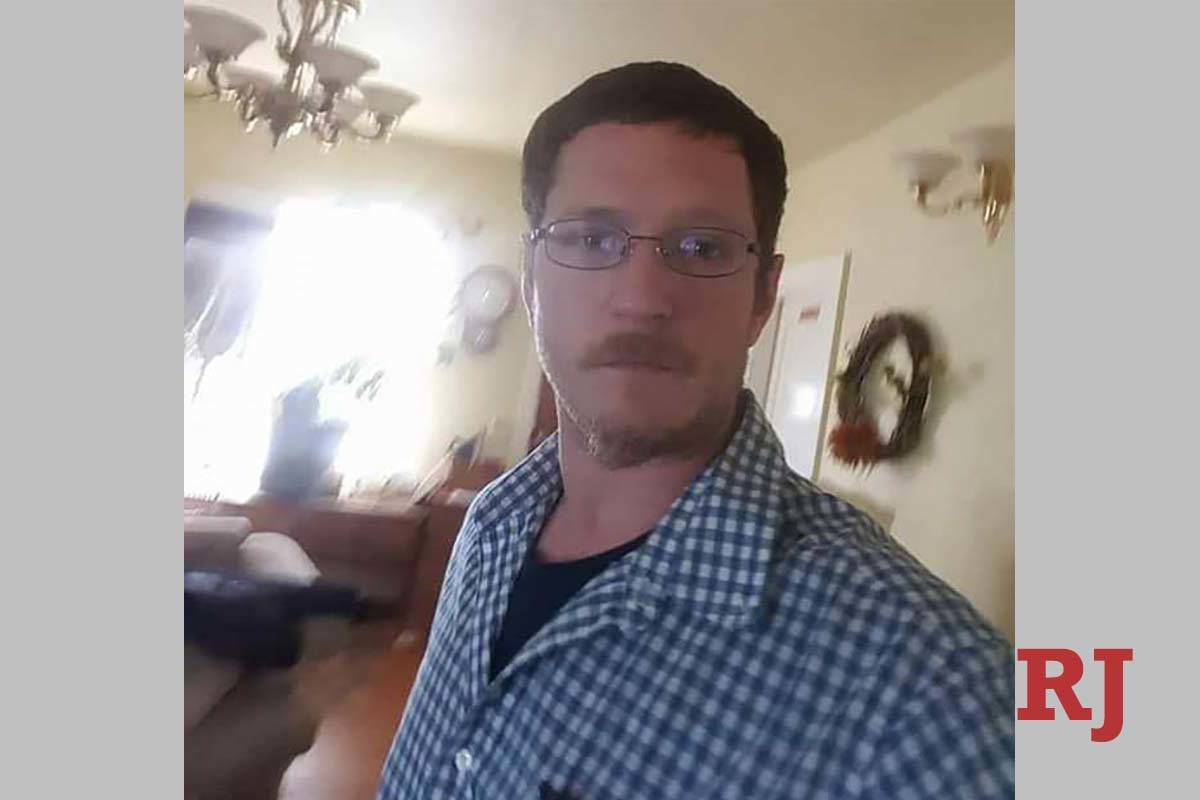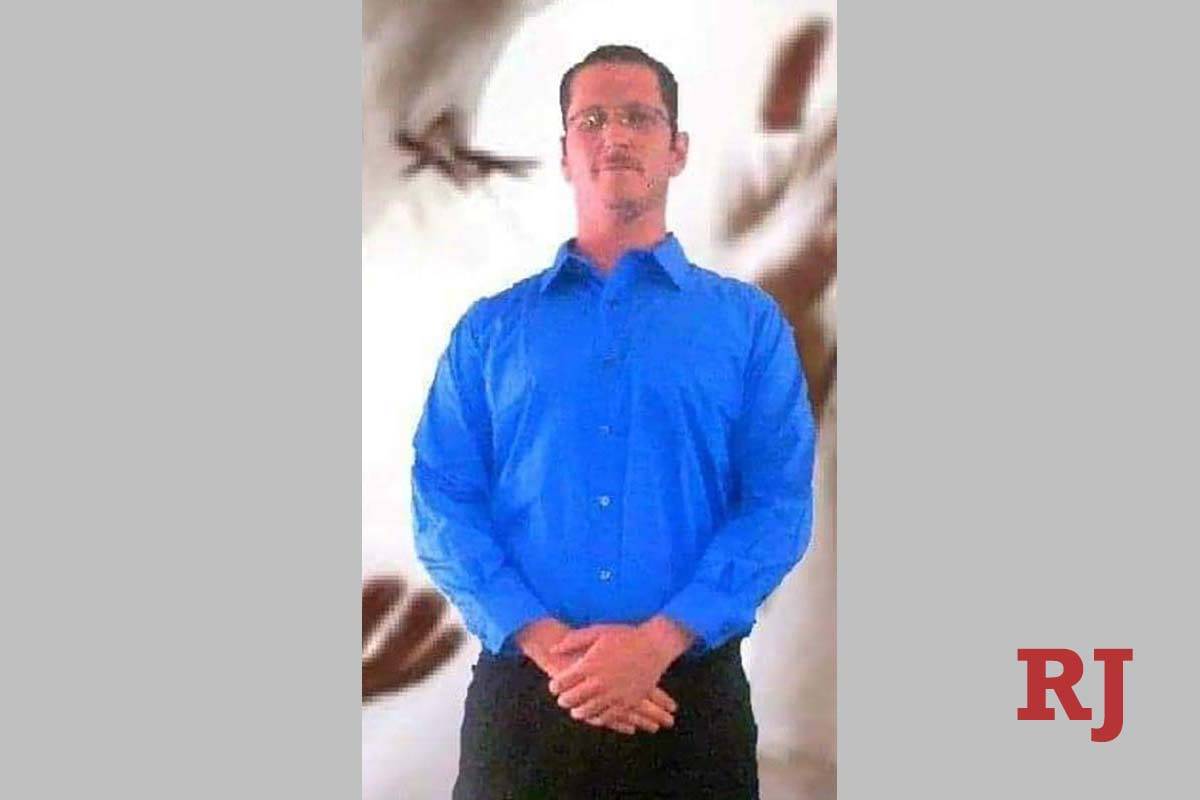Facial recognition technology leads to arrest in Las Vegas killing
Las Vegas police used witness accounts and facial recognition technology to identify a suspect in the April 9 shooting death of a man in the northwest valley, according to an arrest report in the case.
Police arrested Nelson Ortiz, 43, in the killing of Las Vegas resident Brandon Coristine, 32, at a home in the 8400 block of Shady Shores Circle, near the Desert Shores community at Rampart and Lake Mead boulevards. Shortly after the shooting, police said that it happened during a transaction for a computer.
The arrest is one of several in recent months in which Metropolitan Police Department investigators used facial recognition technology to help make an arrest in a major felony crime.
An arrest report for Ortiz indicates that Coristine’s family had rented the house through Airbnb prior to the shooting and that the man who shot Coristine was known to the victim, but the witnesses knew the man only by his nickname, “Face.” One witness said “Face” owed Coristine money, roughly $300, and that “Face” gave Coristine computer equipment “used in making forged documents” as collateral for the debt.
Police said witnesses told them Coristine was in a bedroom of the home with “Face” when Coristine was shot. Police said they tracked down witnesses to the shooting who fled the scene with the gunman. As a result, police were shown a Facebook profile for “Face” provided by a witness as law enforcement attempted to identify the suspect by his real name.
“Detectives obtained the profile photograph from ‘Face’s’ Facebook page and ran it through LVMPD Facial Recognition system, which indicated a booking photograph of Nelson Ortiz was a match for the Facebook photograph,” police wrote in Ortiz’s arrest report.
Witnesses then identified Ortiz as the man they saw with Coristine and whom they knew as “Face,” police said.
Ortiz is charged with one count of murder with a deadly weapon and is housed at the Clark County Detention Center.
‘Secondary tool’
Facial recognition technology is increasingly being used by law enforcement across the nation and usually involves using computer programs to compare an image of a suspect with images on file in police databases such as booking mugs for identification.
Metro spokesman Aden OcampoGomez said the technology is strictly a “secondary tool” for investigators that has been in place for a couple of years. The database that police use relies on images of people previously arrested in Metro’s jurisdiction.
“We use it after a crime has been committed,” OcampoGomez said.
Other Las Vegas cases in which arrests were made with the help of the technology include:
■ Vaseon Robinson, 22, charged with first-degree kidnapping, living from the earnings of a prostitute, child abuse and sex trafficking. Police said they analyzed the victim’s Facebook account and identified Robertson as a suspect with facial recognition technology.
■ William Schilz, 29, charged with kidnapping and sexually assaulting a 12-year-old girl. Police reviewed surveillance video from a 7-Eleven and used facial recognition technology to identify Schilz as a suspect.
■ Donavan Fox, 27, charged with sexual assault, burglary and other felonies involving an intoxicated woman at The Venetian.
■ Marcel Jackson Jr., 26, charged in a May 2019 shooting outside the Casa Grill and Bar on Maryland Parkway. One person was injured. Police identified Jackson as a suspect using surveillance video of the crime and facial recognition technology.
■ Ernesto Cortez, 38, charged in January with battery resulting in substantial bodily harm. Police said he punched a person at a car show, causing the victim to suffer a fractured skull. Police used surveillance footage and facial recognition technology to identify Cortez as a suspect.
Privacy concerns
The use of different types of facial recognition technology has, in some jurisdictions, prompted concerns about invasion of privacy.
NBC News reported that it is now a “routine policing tool” in America. But in San Francisco, officials banned the use of the technology. The nonprofit Brookings Institution wrote that policymakers “should consider the ‘how,’ ‘when’ and ‘why’ of using” the tool and that the technology should be used only “after the fact” of a crime, as opposed to in real time.
Coristine’s mother, Melissa Lickteig, said her son was a kind and giving person. She expressed gratefulness for an arrest in the case, describing Coristine as a loving father and son “who would do anything for anybody.”
“He is a victim,” Lickteig said, adding that he would “be placed in a national cemetery because he served our country proudly.”
The Review-Journal is owned by the family of Las Vegas Sands Corp. Chairman and CEO Sheldon Adelson. Las Vegas Sands operates The Venetian.
Contact Glenn Puit by email at gpuit@reviewjournal.com. Follow @GlennatRJ on Twitter.
This story has been updated to correct the date of Brandon Coristine’s shooting death.

























